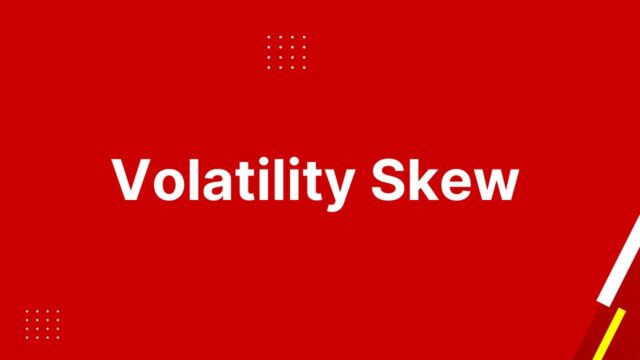
What is volatility skew and why should you care about it
When it comes to options trading, volatility skew is an important concept to understand. In simple terms, volatility skew refers to the difference in implied volatility between puts and calls with the same strike price and expiration date. Put simply, call options tend to have higher implied volatility than put options. While there are a number of factors that can contribute to this phenomenon, one of the most important is demand. Since most option traders are bullish on the market, they are more likely to buy call options than put options.
As a result, demand for call options is higher, and prices are driven up. This in turn leads to higher implied volatility for call options relative to put options. While there are several strategies that can be used to take advantage of volatility skew, one of the most popular is known as a straddle. A straddle involves simultaneously buying a put and a call option with the same strike price and expiration date. By doing so, traders can profit from even small movements in the underlying asset.
While it is important to be aware of volatility skew when trading options, it is also important to remember that the markets are constantly changing. As such, it is important to stay up-to-date on all the latest market developments in order to find opportunities
How to measure volatility skew
There are a variety of methods that can be used to measure volatility skew. The most common approach is to calculate the standard deviation of a series of prices. This can be done using either historical data or implied volatilities. Another approach is to use a model-based method, such as the Black-Scholes model.
This approach requires the use of assumptions about the underlying distribution of prices, but it can be more accurate than the historical data approach. Regardless of which method is used, the goal is to quantify the amount by which the distribution of prices is skewed. This information can be useful for both hedgers and speculators. Hedgers can use it to adjust their positions, and speculators can use it to identify potential trading opportunities.
The effects of volatility skew on options prices
Skew can have a significant impact on option prices, especially when there is a large difference between the two. When skew is positive, it means that at-the-money options are more expensive than out-of-the-money options. This is often the case when there is a lot of uncertainty in the market and investors are looking for ways to protect their portfolios.
On the other hand, when skew is negative, it means that at-the-money options are cheaper than out-of-the=money options. This typically occurs when investors are feeling confident and are more likely to take on risk. Understanding volatility skew is important for both option buyers and sellers in order to make informed decisions about pricing and risk management.
Strategies to take advantage of volatility skew
In finance, volatility skew refers to the difference in implied volatility between out-of-the-money put options and out-of-the-money call options. The skew is typically positive, which means that put options are more expensive than call options. There are a number of reasons why this might be the case, but one of the most important is the increased chance of a sharp decline in stock prices (known as a tail risk).
As a result, investors often use volatility skew to their advantage by buying put options or selling call options. Some specific strategies that can be used to take advantage of volatility skew include buying put spreads, selling call spreads, and buying straddles. Each of these strategies has its own risks and rewards, so it’s important to understand how each one works before implementing it. However, all three can be useful tools for taking advantage of positive skew in the market.
The future of volatility skew trading
The future of volatility skew trading is shrouded in uncertainty. The VIX index, which is used to measure market volatility, has been on a steady decline since early 2018. This has led to a reduction in the number of trading opportunities for those who specialize in volatility skew trading. In addition, the recent introduction of cryptocurrency futures has created a new asset class that is attracting traders away from the traditional markets. As a result, it is difficult to predict how the landscape of volatility skew trading will change in the coming years. However, one thing is certain: the industry will continue to evolve and adapt to the ever-changing market conditions.


































